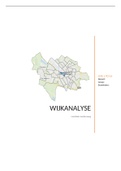Samenvatting
Summary Readings Introduction to Conflict Studies Midterm
- Vak
- Instelling
This is a summary of (most of) the readings of the first six weeks of the course Introduction to Conflict Studies. This course is part of the Minor Conflict Studies and is taught at the University of Amsterdam.
[Meer zien]












